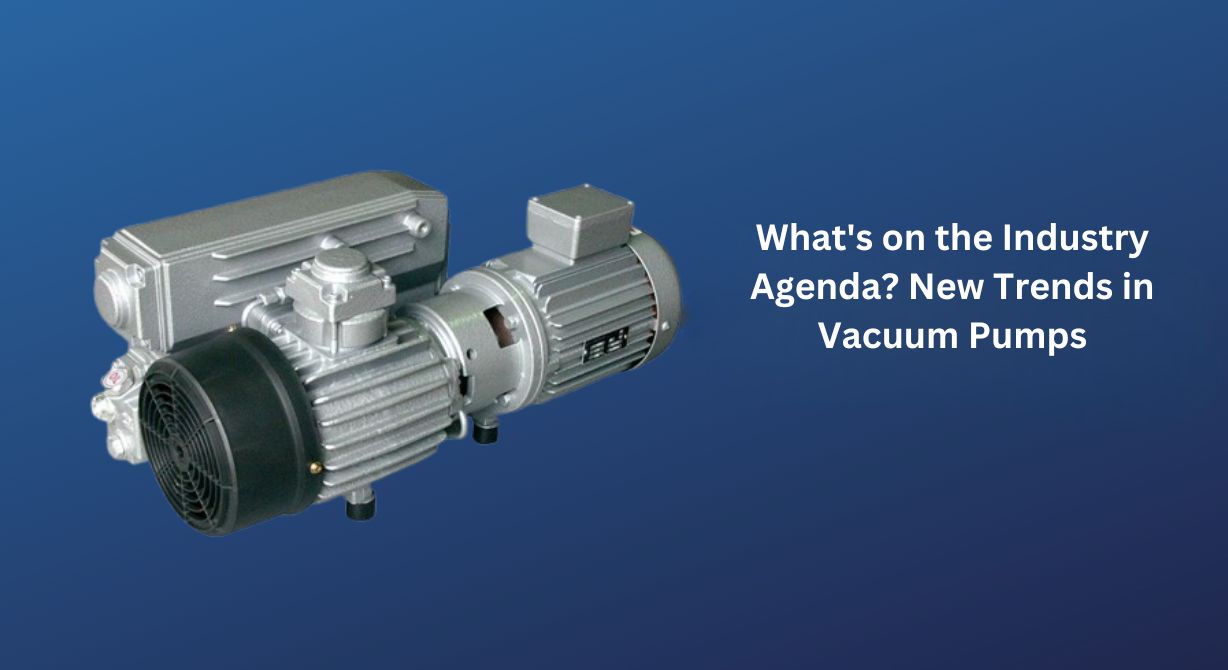What's on the Industry Agenda? New Trends in Vacuum Pumps
Table of Contents
- New Trends in Vacuum Pumps in 2025
- Recent Developments in Vacuum Pump Technology: What’s Changing?
- Smart Vacuum Pumps: The Industrial Standard of the Future?
- Silent and Energy-Efficient Vacuum Pumps: Do They Really Make a Difference?
- The Role of IoT and Data Analytics in Next-Generation Vacuum Pumps
- Sustainability in Vacuum Pumps: Which Technologies Stand Out?
New Trends in Vacuum Pumps in 2025
The year 2025 is set to be a year of quiet revolutions in the world of vacuum pumps. Thanks especially to IoT integration, pumps are transforming from purely mechanical devices into smart systems that collect data and optimize their performance by analyzing it. This brings innovative possibilities like real-time monitoring, remote access, and fault prediction to production processes.
Another notable trend is designs focused on energy efficiency. New-generation vacuum pumps are being developed to deliver the same or even higher performance with lower energy consumption. This helps businesses contribute to environmental sustainability goals while achieving significant cost advantages in the long term.
Reducing noise levels is also among the key trends. Quiet-operating models are increasingly preferred in sensitive industries like laboratories and food production. Silent vacuum pumps not only improve employee comfort but also extend equipment lifespan by reducing unnecessary vibration and noise in production areas.
Another important aspect of 2025 trends is compact and modular designs. These new vacuum pump solutions, which save space, attract great interest in the industry thanks to easy maintenance and quick installation. Additionally, the use of recyclable materials to reduce carbon footprints is becoming more common.
All these developments clearly show how the vacuum pump sector is evolving with technology and how it’s making a difference not just in power but also in efficiency, silence, and sustainability.
Recent Developments in Vacuum Pump Technology: What’s Changing?
The year 2025 is set to be a year of quiet revolutions in the world of vacuum pumps. Thanks especially to IoT integration, pumps are transforming from purely mechanical devices into smart systems that collect data and optimize their performance by analyzing it. This brings innovative possibilities like real-time monitoring, remote access, and fault prediction to production processes.
Another notable trend is designs focused on energy efficiency. New-generation vacuum pumps are being developed to deliver the same or even higher performance with lower energy consumption. This helps businesses contribute to environmental sustainability goals while achieving significant cost advantages in the long term.
Reducing noise levels is also among the key trends. Quiet-operating models are increasingly preferred in sensitive industries like laboratories and food production. Silent vacuum pumps not only improve employee comfort but also extend equipment lifespan by reducing unnecessary vibration and noise in production areas.
Another important aspect of 2025 trends is compact and modular designs. These new vacuum pump solutions, which save space, attract great interest in the industry thanks to easy maintenance and quick installation. Additionally, the use of recyclable materials to reduce carbon footprints is becoming more common.
All these developments clearly show how the vacuum pump sector is evolving with technology and how it’s making a difference not just in power but also in efficiency, silence, and sustainability.
Smart Vacuum Pumps: The Industrial Standard of the Future?
When it comes to efficiency and smart automation in industry, smart vacuum pumps are among the first technologies that come to mind. Rapidly replacing classic pumps, these systems offer real-time data tracking and performance optimization thanks to IoT integration. By ensuring uninterrupted operation on production lines and minimizing unplanned downtime, they provide significant cost advantages to businesses. Especially in industries requiring high precision, smart vacuum pumps are becoming not just an option but almost a necessity.
These next-generation pumps can analyze the data they collect throughout their service life to predict failures. This allows maintenance teams to shift from unplanned maintenance to need-based maintenance, saving both time and money. Additionally, the ability to monitor energy consumption in real time and self-optimize when necessary contributes to sustainable production goals. Unlike traditional pumps that run at a constant speed, smart vacuum pumps can adjust speed and power as needed, preventing unnecessary energy use.
Not only in large factories but also in medium-sized facilities, smart vacuum pumps make a difference. Their easy integration into central control systems simplifies operators’ work while providing valuable reports to management. Moreover, the detailed performance analyses offered by these pumps make production processes more transparent and trackable. As a result, smart vacuum pumps are seen as critical equipment defining not only today’s standards but also those of tomorrow.

Silent and Energy-Efficient Vacuum Pumps: Do They Really Make a Difference?
In recent years, silent vacuum pumps and energy-efficient vacuum pumps have been widely discussed everywhere from production facilities to laboratory settings. Compared to traditional models, the low noise level of these new-generation pumps not only increases employee comfort but also minimizes vibration-related errors in environments where sensitive devices are used. This silence is especially valuable in fields like medical, R&D, and chemistry.
Meanwhile, energy-efficient vacuum pumps, unlike standard models with constant power consumption, achieve significant savings through smart motors and inverter technologies that operate on demand. This both reduces the carbon footprint and lowers energy bills. Considering annual energy expenses in large-scale production facilities, these savings significantly shorten the investment payback period.
In industries with high performance expectations, “silence and efficiency” were not usually thought of together. But modern silent vacuum pumps, thanks to specially designed bodies that reduce vibration and optimized airflow systems, can work more quietly while maintaining strong vacuum performance. Plus, these systems continuously track maintenance times and performance status via smart control units. This means they don’t just offer advantages in energy and noise but also make a difference in operational continuity.
The Role of IoT and Data Analytics in Next-Generation Vacuum Pumps
As next-generation vacuum pumps rapidly replace traditional models, IoT and data analytics are at the heart of this transformation. Thanks to these technologies, pumps are no longer just mechanical equipment but become the digital brains of production lines. Collecting, analyzing, and remotely managing real-time performance data significantly reduces maintenance costs and increases efficiency.
For example, with IoT integration, a vacuum pump can continuously transmit critical data like operating temperature, pressure level, and motor performance to a central system. This makes it possible to detect and intervene in possible failures or performance drops before they even occur. In 24/7 industries, this difference means significant annual savings.
On the other hand, data analytics plays a critical role not just in preventing failures but also in process optimization. Analyzing real-time and historical data helps identify which times pumps work more efficiently or in which processes they consume unnecessary energy. This allows businesses to reduce energy consumption while increasing overall efficiency. With these Industry 4.0 advantages, vacuum pumps become not just supporting equipment but strategic production partners.
Sustainability in Vacuum Pumps: Which Technologies Stand Out?
Today, the concept of sustainability covers a broad spectrum beyond just energy savings, from the design of production equipment to maintenance processes. Vacuum pumps are at the center of this transformation. New-generation pumps, which attract attention with designs that reduce carbon footprints, consume less energy, and last longer, have become indispensable for eco-friendly production goals.
Among the standout technologies are smart control systems that use variable-speed motors to adjust power consumption based on demand. These systems respond instantly to fluctuations on the production line, eliminating unnecessary energy waste. Additionally, components made from recyclable materials help manage waste and contribute to sustainability goals.
Another notable innovation is oil-free vacuum pumps. These technologies eliminate the need for oil changes, lowering maintenance costs and preventing environmentally harmful waste oils. Particularly in sensitive processes, these systems also improve cleanliness and hygiene standards, making them preferred in sectors like chemistry and food production.
Finally, remote monitoring and IoT integrations also strengthen the sustainability performance of vacuum pumps. These features enable real-time monitoring of device status, early fault detection, and more planned maintenance processes. As a result, resource use is optimized while production continuity is maintained.


